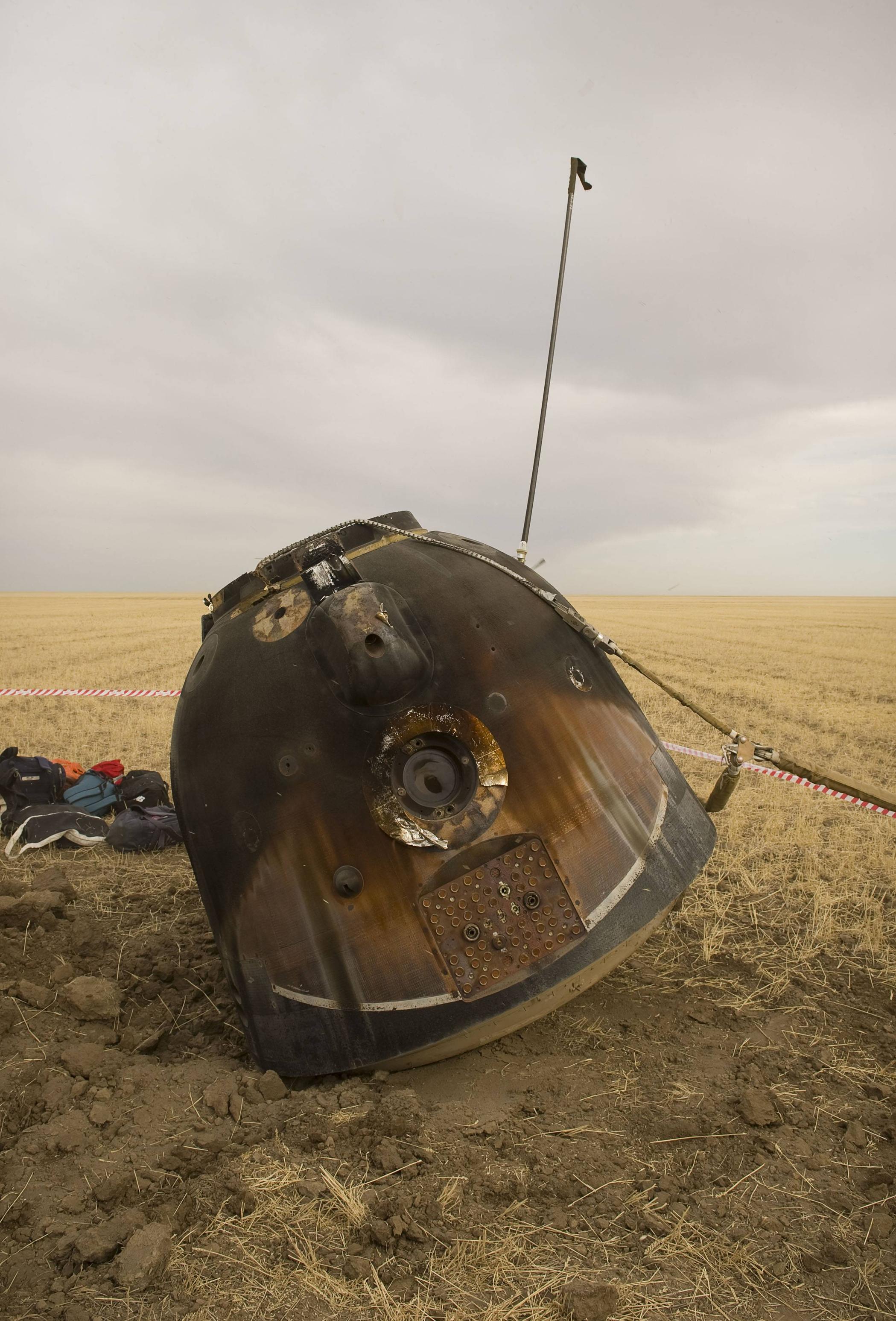Soyuz was designed and tested for water landing capability (the unfortunate lake landing notwithstanding):

The photograph is attributed to Zond 5 unmanned mission within the lunar L1-Zond effort:
http://en.wikipedia.org/wiki/Soyuz_7K-L1
Some additional curious bits of info on Zond 5: there were some life turtles riding this probe around the moon and back. All survived, despite reentry at near escape velocity. Also, the weather at the recovery site was rather bad and there was an US military vessel nearby trying to take a look at what's going on and possibly snatch the probe. Despite this, the recovery vessel "Borovichi" was able to locate and recover the probe in just 10 hours overnight.
There also existed a special water landing facility at Feodosia to develop this capability.
Water landing tests are still performed, occasionally:



